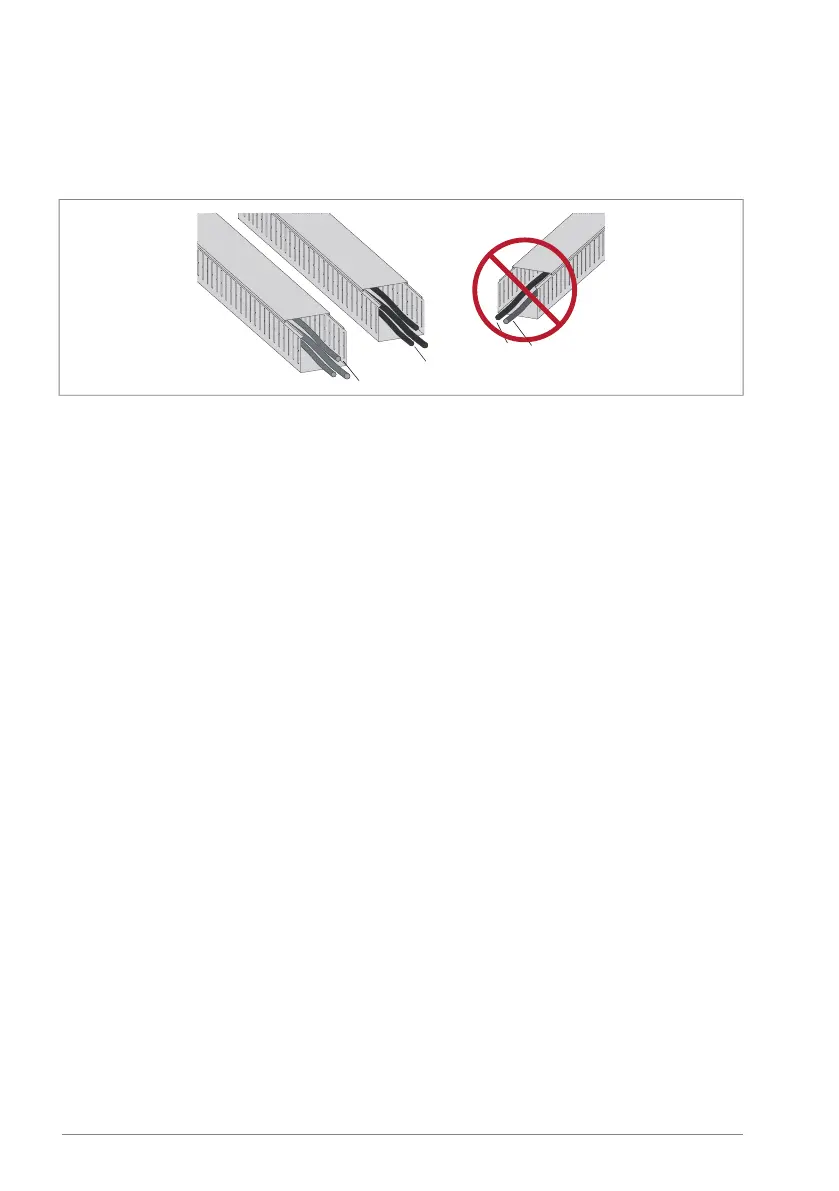■
Separate control cable ducts
Put 24 V DC and 230 V AC (120 V AC) control cables in separate ducts, unless the
24 V DC cable is insulated for 230 V AC (120 V AC) or insulated with an insulation
sleeving for 230 V AC (120 V AC).
24 V DC
230 V AC
(120 V AC)
230 V AC
(120 V AC)
24 V DC
Implementing short-circuit and thermal overload protection
■
Protecting the drive and input power cable in short-circuits
Use the fuses specified for the drive in the technical data. Make sure that also the
electric power supply network meets the specification (minimum allowed
short-circuit current that the fuse selection is based on).
The fuses restrict drive damage and prevent damage to adjoining equipment in
case of a short-circuit inside the drive. When located at the distribution board, the
fuses also protect the input power cable against short circuits.
See the drive technical data for alternative short-circuit protections.
■
Protecting the motor and motor cable in short-circuits
The drive protects the motor cable and motor in a short-circuit situation when:
• the motor cable is sized correctly
• the motor cable type complies with the motor cable selection guidelines by
ABB
• the cable length does not exceed the allowed maximum length specified for
the drive
• the setting of parameter 99.10 Motor nominal power in the drive is equal with
the value given on the motor rating plate.
The electronic power output short-circuit protection circuitry meets the
requirements of IEC 60364-4-41 2005/AMD1.
56 Guidelines for planning the electrical installation
